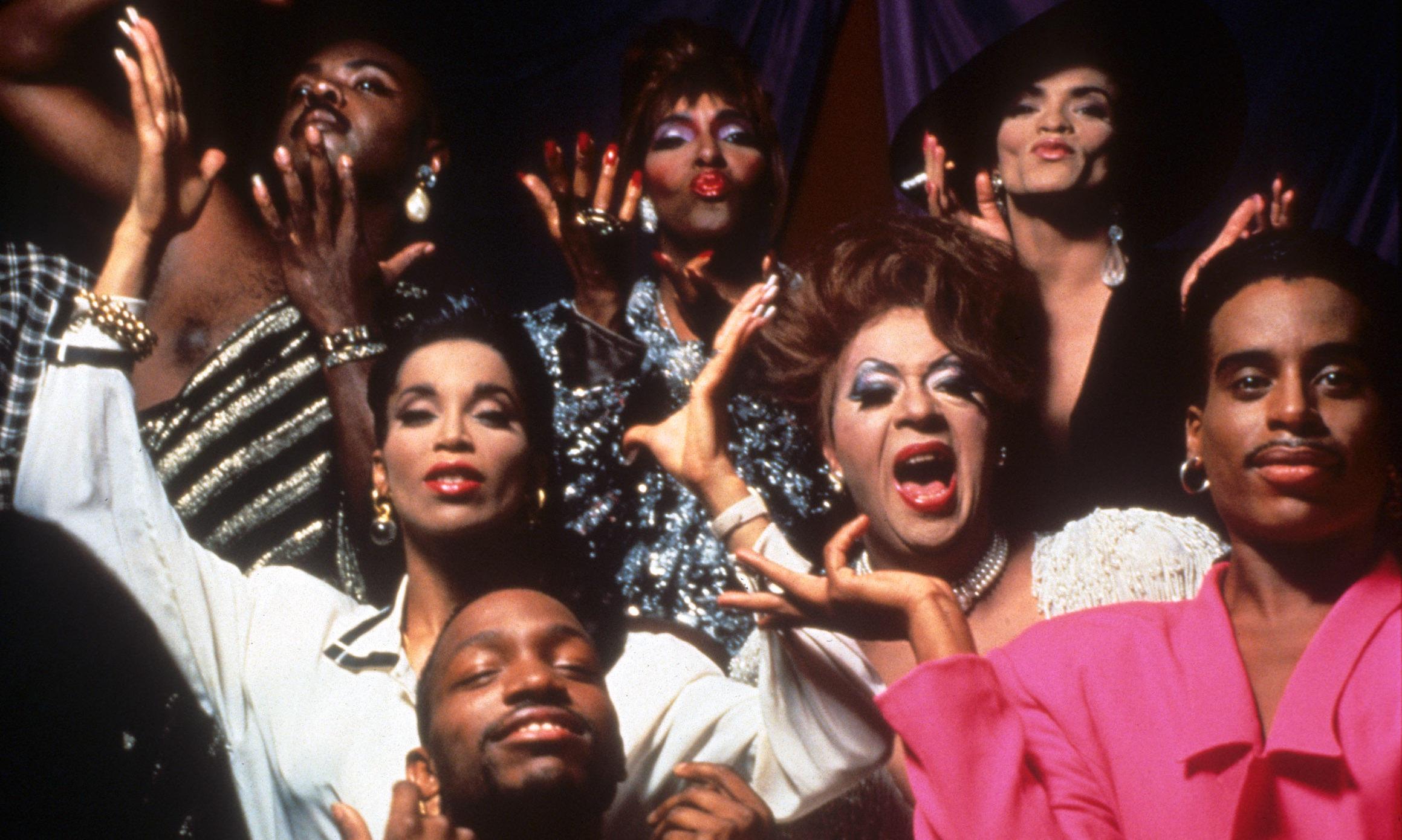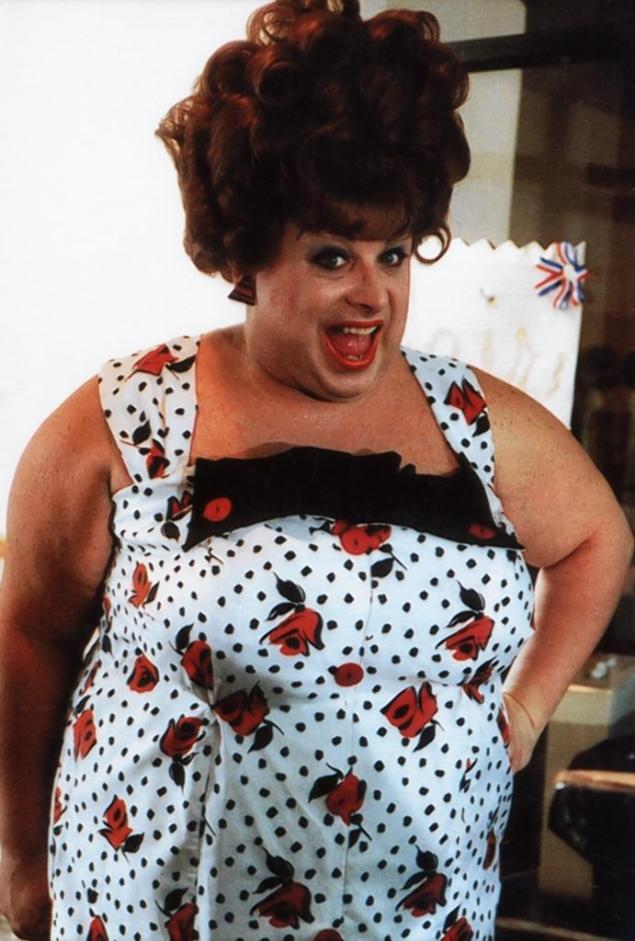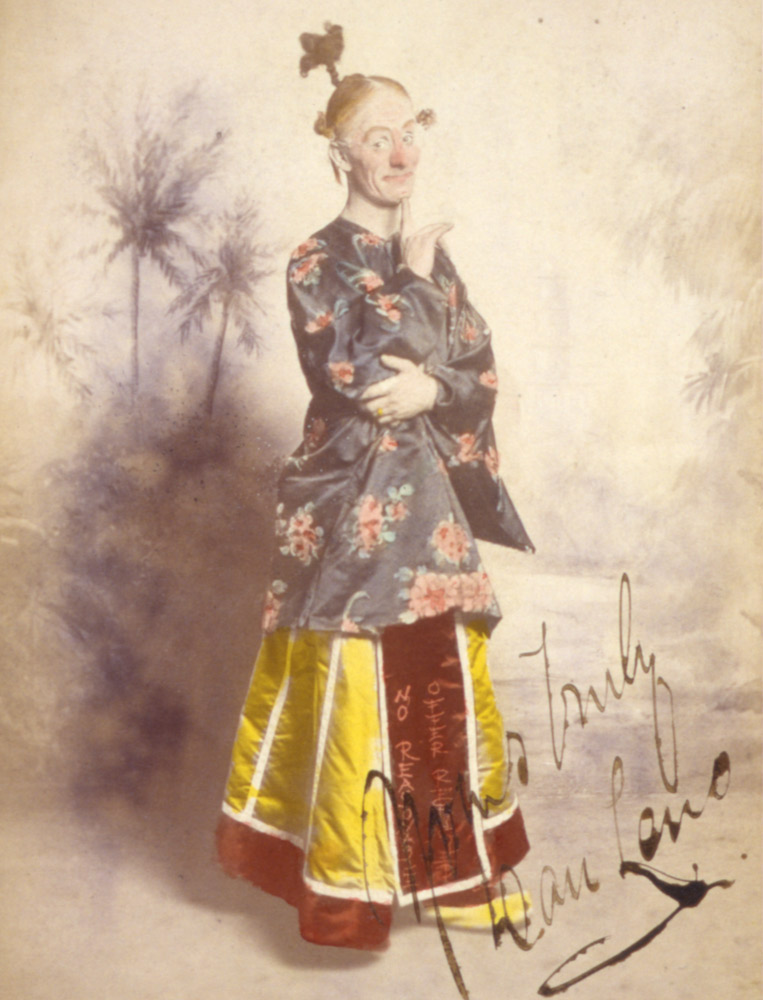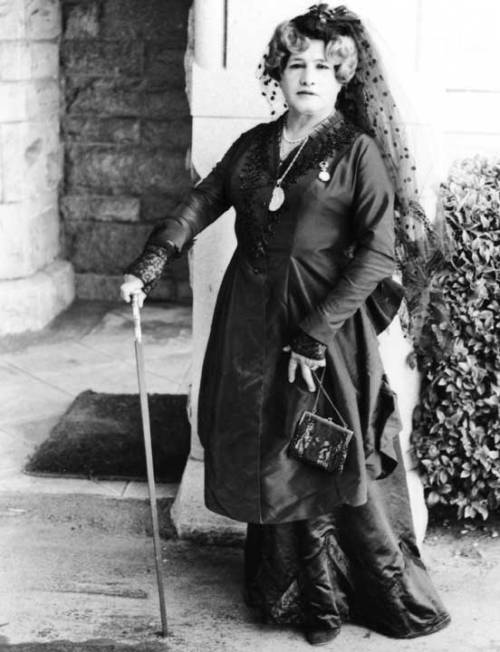Drag Queens and Dramatic Scenes
“When you become the image of your own imagination, it's the most powerful thing you could ever do.”
-RuPaul
 Drag Queen costume, 2017, Private Collection Drag Queen costume, 2017, Private Collection |
Centuries before RuPaul's Drag Race, men were dressing in drag. Dating as far back as Ancient Greece, men were needed to play women's parts on stage as it was thought to be too dangerous or, in the Middle Ages, too indecent for women to act. It wasn't until the 18th century however, when women were permitted on stage that drag was truly born. Despite the availability of women to portray female roles, men would dress up as matronly characters for comedic purposes. The British genre, called pantomime featured burly men feigning femininity as older characters with excessive makeup and hair. This dame archetype would be continued into vaudeville scenes through the 20th century.
|
|
The term “drag” came about in the late 19th century, thought to be a reference to the long skirts of the actors dragging on the floor. The vaudeville actors would put on campy dame roles for comedy, elliciting cheers with faux- effemincancy and overt inuendos. This form of drag was not only accepted but successful in the entertainment world until the twentieth century.
It wasn't until drag was linked to homosexuality that it became taboo in the United States. In the 1920s as gay men started to come out into the public eye, drag was forced into underground entertainment, surviving in speakeasies and bars with largely gay clientele. Hostility toward the gay community led to, among other things, anti-cross-dressing laws in the 1950s. For example, in New York, a man could be arrested for drag if he were wearing fewer than three articles of male clothing.
|
Her Royal Majesty, Empress of San Francisco, Jose I, The Widow Norton, aka José Julio Sarria, 1983, Rink Foto, Leslie + Lohman Museum of Gay and Lesbian Art |
In 1965, the Imperial Court System was founded by José Julio Sarria. The organization unified drag queens with annual balls and other events, as well as championed rights in the gay community, and it remains one of the largest and oldest organizations for LGBT rights in the world. This came at an important time as the increased public presence of LGBT community was being legally and violently repressed. The clash came to a head in 1969 with the Stonewall Riots at the Stonewall Inn in New York when police attempted to arrest individuals in the Mafia-run hotel for homosexual acts, and the workers and clientele decided to fight back.
The formal organization of drag queens with the Imperial Court System helped the community thrive. Drag houses popped up across the nation, where drag queen “mothers” or “fathers” could take in novices and not only help them with their drag aspirations but also provide moral support and shelter for those that were outcast or kicked out of their homes.
 Image from the 1990 documentary, Paris is Burning by Jennie Livingston, which gave intimate glimpses into American drag houses Image from the 1990 documentary, Paris is Burning by Jennie Livingston, which gave intimate glimpses into American drag houses |
Many drag queens have become famous; in Baltimore, Divine created an iconic Edna Turnblad in John Water's Hairspray, a role which is still done in drag. Today, drag queens have become much more widely accepted. RuPaul's Drag Race has just finished its ninth season, in which famous drag queens from across the nation compete with over-the-top costumes and personas. While the denotion of “drag queen” is generally closely associated with the gay community, drag queens can also be straight, they may identify as male or female when off stage, they may be transgender or transsexual, and they might chose to live life as their drag persona.
 Divine (Harris Glenn Milstead) as Edna Turnblad in Hairspray, 1988 Divine (Harris Glenn Milstead) as Edna Turnblad in Hairspray, 1988 |
Come see the drag queen pictured at the top of the page this Thursday at the grand opening of our new exhibition, Structure + Perspective: David Brewster explores Maryland's Social Landscape.
View Structure + Perspective
References:
American Experience. “Stonewall Uprising.” PBS. (Oct. 31, 2012.) http://www.pbs.org/wgbh/americanexperience/features/transcript/stonewall-transcript/
Cristen Conger “How Drag Queens Work” 12 November 2012.
HowStuffWorks.com. <http://people.howstuffworks.com/drag-queen.htm> 8 October 2017
HowStuffWorks.com. <http://people.howstuffworks.com/drag-queen.htm> 8 October 2017
The British Players. “About Pantomine.” (Oct. 8, 2017) http://www.britishplayers.org/aboutpantomime.html
Victoria & Albert Museum. “Pantomime Acts.” (Oct. 8, 2017)



